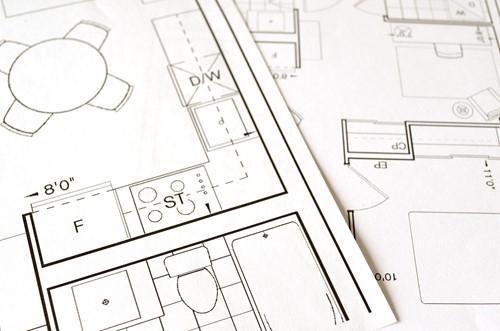
It may come as something of a surprise to prospective home buyers and contractors, but the open floor plan was popularized as far back as the 1950s. The open floor plan boom took off during the 1990s, and that’s when it evolved into a new construction norm.
By its very nature, the open floor plan reduces many of the accessibility impediments found in traditional homes that emphasize separated rooms and sometimes narrow doorways. In terms of new construction homes improving accessibility for people who use wheelchairs, walkers or have growing physical limitations, these are ways open floor plans can be modified to increase accessibility and quality of life further.
It’s essential to understand the open floor plan through a lens of accessibility. Although new construction homes are typically exempt from Americans with Disabilities Act (ADA) regulations, elements that improve accessibility also tend to enhance the enjoyment of living spaces. Layouts that merge rooms eliminate things like door thresholds and tight spaces, among others. These are three popular open floor plans that increase accessibility in this fashion.
Merging rooms in a new home design only increases accessibility. Given that new residential property owners want higher resale values and better quality of life experiences, these layouts make sense.
The basic open layout can be a jumping-off point for more robust accessibility. Many are designed with little consideration given to the physical limitations of our valued community members. By rethinking living spaces in terms of accessible use, simple changes can be integrated that deliver substantial benefits.
Open floor plans still rank among the most popular new construction layouts used today. They are inherently accessible due to the elimination of walls and doors found in other designs. With a few cost-effective modifications, an open floor plan home has the potential to become fully accessible.

As a Real Estate Professional my number one goal is to provide exceptional service that leaves my clients happily satisfied. I do this with my commitment to helping you buy or sell your home with the highest level of expertise in your local market. This also means helping you understand each step of the buying or selling process. I do not sell houses, I simply guide my clients through a predetermined series of events to ensure a smooth stress free Real Estate experience. You can count on me to always do what's in your best interest, as I pride myself on being honest, trustworthy, and knowledgeable in the Real Estate market. I understand how important it is to get the best offer for your property, therefore I make it my responsibility to help you achieve these goals. Whether you are buying or selling your primary residence, a second home, investor property, a first time buyer, or just relocating to a new neighborhood, I can help make your home-ownership dreams come true. (First Time Buyer Specialist) (Certified Probate & Trust Specialist)
"A Trusted Name in Sonoma County Real Estate."